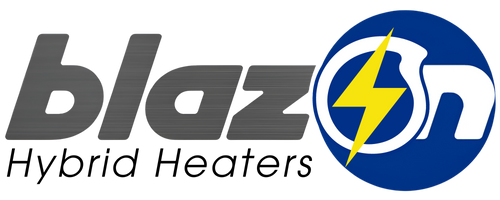Moosejaw Radio is a lighthearted, sometimes informative, blog about living and traveling in the 21st Century while navigating a progressively digital planet in real time, juxtapositioning contemporary geographies and the myriad histories which enrich them.
Writer James Kerns has worked as a restaurateur, bicycle messenger, sculptor, commercial fisherman, designer, builder, and consultant, who has traveled the globe by boat, bus, rail, plane, and bicycle. His passion for people and geography, and the cultures and histories which bind them, provide the foundations from which his stories are drawn.

- The Valley of Gold - Was Not
- Critters Left Right and Center
- Jumping Off Point: Matagami
- Pierre-Esprit Radisson - Runner of the Woods
- Gas is Where?
- WARNING: Do Not Read This if You Are a Mountie or Someone Who Abides by "Rules"

THE SUN KING AND VERSAILLES MEETS DOWNTOWN VAL D'OR AND MINER X
The Valley of Gold was Not
You hear Val d'Or and your mind leaps to extravagant images of magnificence and splendor, and let's just say it: wealth. Nope. Louis XIV, aka Le Roi Soleil, one-time ruler of Canada and the mastermind of Versailles, a man who chose the sun as his own personal symbol, would not have been impressed with the specific lack of gold adorning the city, but he would have had a keen interest in local mining operations and the nearby La Vérendrye Wildlife Reserve. The French King and his administrators made hard plays to strengthen the colony of New France in the mid 1650s - highlighted by a truly Louisian scheme: the creation of The Society of the King's Daughters, a group of state sponsored single women recruited in France and sent to find husbands and ramp up the population schedule in Canada. In spite of this innovative strategy, the Crown's primary drive remained focused on extracting cash in the form of furs from their New World holdings in order to help fund the ceaseless wars Louis was fighting in Europe. This relative indifference towards the citizenry of New France eventually led some of the King's own subjects to look to England for patronage. Specifically, one Pierre-Esprit Radisson, a polyglot explorer and fur trader who would remain a considerable force in the European fur trade around Hudson's Bay for decades.
5 things to do in Val d'Or which prove Louis XIV wrong:
- La Vérendrye Wildlife Reserve - 800 kilometers for paddling and 800 lakes for fishing! Numerous hiking trails and wild berries in July and August!
- Cycling - 1,131 kilometers and 28 mapped routes including: Gravel Routes, Road Routes, MTB Routes, Relaxed-Riding Routes
- Mine Tours - Drop 300' into an old mining shaft!
- VoArt Exposition / Exhibition Center - New and emerging artists, shows and events
- Festival D'Humour - Is there a better way to show-off your french?
SOME OF THE WILDLIFE OF QUEBEC

Critters! Left Right and Center
The abundance of wildlife we saw from the car between Val d'Or and Metagami was astonishing - especially as twilight edged across the sweeping purple skies. Included in those sightings were: bears, lynx, foxes, moose, deer, hawks, hares, beavers, and a multitude of song birds, raptors and owls; but for all of what we saw right there by the side of the road, I could only wonder at what lived in the miles of waterways and dense forests beyond. It was easy to imagine why so many native North Americans and their European counterparts sought their fortunes in the trapping, buying, trading and stealing of fur pelts from all corners of the bountiful lands between the Great Lakes and Hudson's Bay.
Jumping Off Point: Matagami
Three hours north of Val d'Or, the small town of Matagami is sandwiched between the terminus of Quebec Route 109 at one end of town, and the start of The James Bay Road on the other. Technically part of the Eeyou Istchee James Bay Municipality, the town was founded on the site of a mining camp in 1963, and given the name for the Cree word meaning "where the waters meet". We arrived in the late afternoon and checked into our perfectly adequate and wholly unremarkable hotel.
THE AUTHOR'S FAMILY AT KM 0

There are not a great many opportunities to find resources over long stretches of the JBH, so we headed directly to the Marché Bonichoix Matagami and stocked up on water, provisions, blankets and coffee - much like many of the intrepid souls who marched into the same wilderness seeking their fortunes decades and centuries before us. Except we had a car. And phones. And GPS. And we didn't need blankets. But we still had to plan! Whatever security we could not grab off the shelves of the supermarket to ensure our survival, we were hoping to find in the form of relevant travel and safety information at the check-in station located at the start of the James Bay Road.
French-Canadian explorer Pierre Radisson emigrated to New France with his sisters as a young boy, and by the ripe age of 14, he had already been attacked, captured, adopted, tortured, freed, hunted and befriended by various Iroquois and Algonquin bands. Growing into adulthood in and among the patchwork of tribal communities, he learned the languages and customs of native tribes from Schenectady, NY to Thunder Bay, Ontario, and by the time he turned 20 he was the preeminent coureurs des bois (runner(s) of the woods) in the Great Lakes regions and throughout the vast southern territory of French Canada. Radisson was so rad, he deserves his own set of bullet points. Here's a partial list of some of his exploits:
COUREURS de BOIS PIERRE RADISSON

- Was adopted into a Mohawk Band
- Spoke several Native dialects
- Traversed the entire perimeter of Lake Superior on foot
- Did business with governors, princes and kings
- Was the force behind the creation of The Hudson's Bay Company
- Got married in England to help seal the deal
- Looked fierce in portraits
![]() Gas is Where?
Gas is Where?
Aspirants wishing to drive The James Bay Road must register at a checkpoint booth located at mile 3.7. While there, road pilgrims are reminded that the only roadside opportunity for gas, food and lodging is at a cleverly named rest stop called Relais 381; precisely 381 kms, or 236 miles from the entrance. My wife wanted assurances that there would indeed be lodging there and the woman attending the booth laughed and pointed to the sign-in log to emphasize how few travelers were on the road. There were always rooms available there she told us. What we knew for sure was that there was scant information on the internet regarding amenities along the road and all points north, and that we would have zero cell service anytime we were outside of any immediate population centers. While we are at it, here's a set of bullet point safety reminders for driving the JBH:
- Get gas whenever and wherever possible!
- Same goes for water and food - there are only a half dozen areas to replenish all the above on the entire road, and 4 of those 6 places are another ~60 miles off the highway on gravel roads. Each way.
- Have emergency preparedness kit! Including an emergency heat source and charging station like The BlazOn Ember!
- Don't drive after dark: there are no road lights on the route, and the abundance of wildlife plus impenetrable darkness are a dangerous mix.
- PAY ATTENTION: It is beautiful!

After a highly successful fur gathering expedition around Lake Superior in 1659, Radisson and his partner Medard Groseilliers returned to Quebec and were promptly relieved of a sizable portion of their fortune by the French governor. When their petitions to reclaim the bounty were denied, the two trappers took their talents and prospects to Boston in search of new sponsors. In Boston, the frontiersmen pitched an expedition to traverse and exploit the bountiful shores and tributaries of Hudson's Bay for the amplitude of fur they believed to be available. The key aspect of their plan involved sailing in and out of the storied "salt sea" to the north, and setting up camps along the shores of the bay as fur collection points.
Once full, the vessels would sail back to English territory avoiding arduous and danger-filled land routes - and the French. The British merchants were ready to listen, especially considering that much of the land area under discussion was heretofore without an established European overlord. After locally funded efforts failed, the two men were sent to England to seek deeper pockets and to meet King Charles II. Their enterprise caught the interest of the King's royal cousin and erstwhile courtier: Prince Rupert of the Rhine.
WARNING: Do Not Read This if You Are a Mountie or Someone Who Abides by "Rules"
When we pulled into Relais 381 in the late evening, we discovered that in fact there were no accommodations available for the next several weeks. Apparently all of the rooms were booked by the road crews we had been intermittently passing all day, and they had not bothered to register at the checkpoint, thereby negating the booth attendant's highly sophisticated booking analysis. No panic, right? Sometimes the code of the road requires its pilgrims to dig deep, to look back down the years and think like our wild forebears. This is what we trained for! This was pioneering, exploring, living on the edge! I figured we'd hunker down somewhere, make coffee - I'd take the first watch. We started scouting the cafeteria for a spot to set-up our tent. Our search was interrupted by a man who told us he was from the nearby Cree Village of Eastmain, and that a brand new hotel had just opened there by the river. This was news to us, we had been told there was no lodging whatsoever outside of Relais 381 until the Cree Village of Chesasabi, 193 miles up the road. Unfortunately, the man did not have any contact information for the hotel either, so we could not confirm its existence, and once we were a few miles from the rest stop we would once again be without cell service. We'd skipped a visit to Eastmain earlier knowing it was a 128 mile out and back on gravel roads - not something we wanted to tackle late in the day. After briefly considering the mere possibility of hotel beds versus the 24-hr flourescent-lit cafeteria floor, we headed back to the car.

Conventional wisdom (perhaps all wisdom) says stay under 25 mph when driving on gravel. Area speed-limit signs were set at ~30 mph for the gravel roads connected to the JBH. I get it, those are safe numbers for traveling on a quasi-fluid or at least shifting surface, and I too have respect for safety-mindedness. Local wisdom informed us that one should not be travelling on the JBH and its tributaries at all after dark (see above critter references), and my own research told me that sunset would occur around 8:45 PM, and all daylight would cease around ten. It was well past eight-o'clock when we pulled into Relais and dutifully filled our gas tank. Given that we were already 18 miles past the turnoff for Eastmain, and the village lay another 64 miles west of that point - we had a problem. I hate to keep interrupting our story with math, but facts are facts: 18 + 64 / 25 = NO WAY.

In Our Next Episode:
I Don't Drive 25
Prince Rupert Narrowly Escapes 17th-Century Boy Band Purgatory
The Children of Eastmain Think We Require Supervision
More Gravel!




